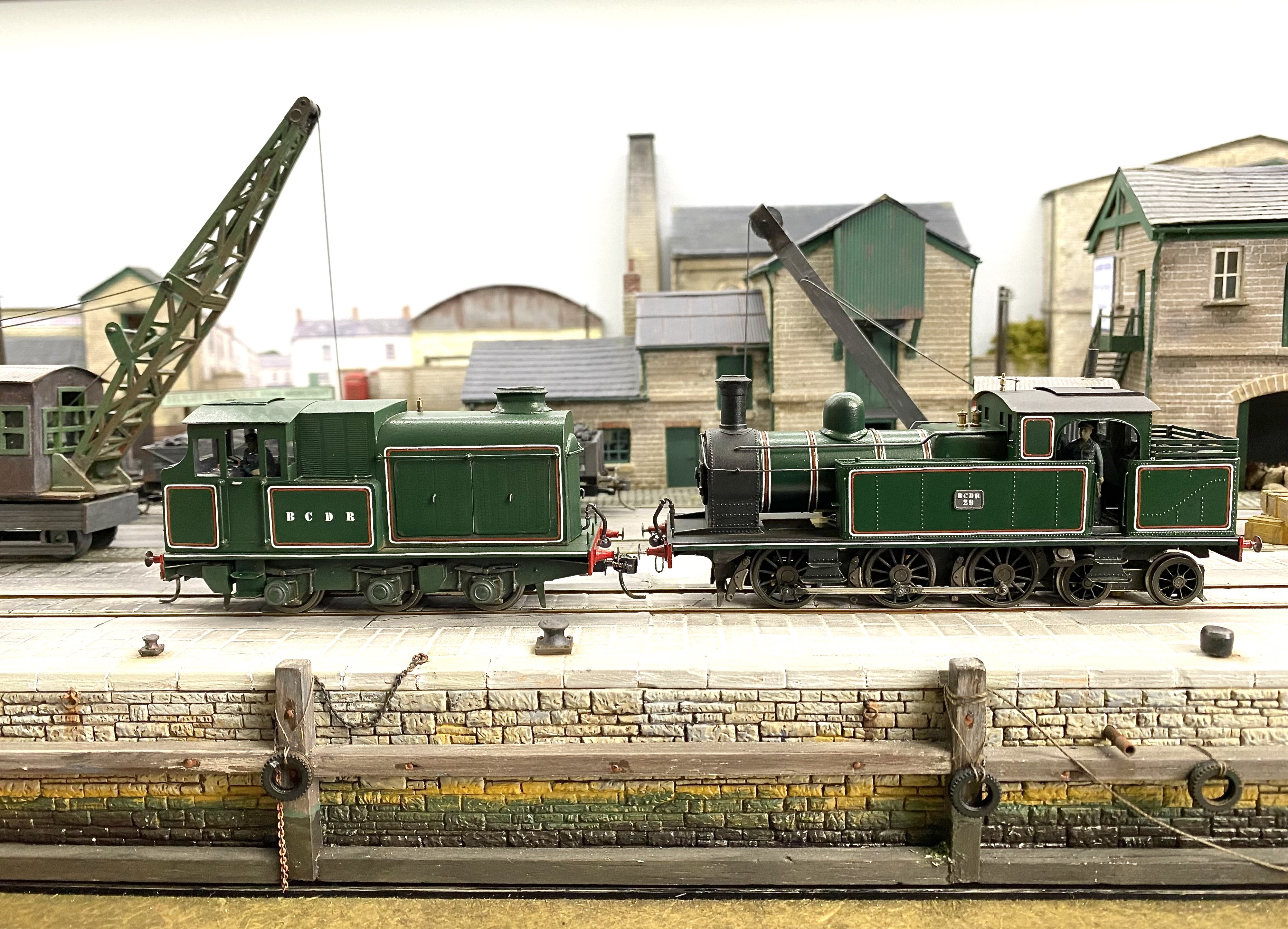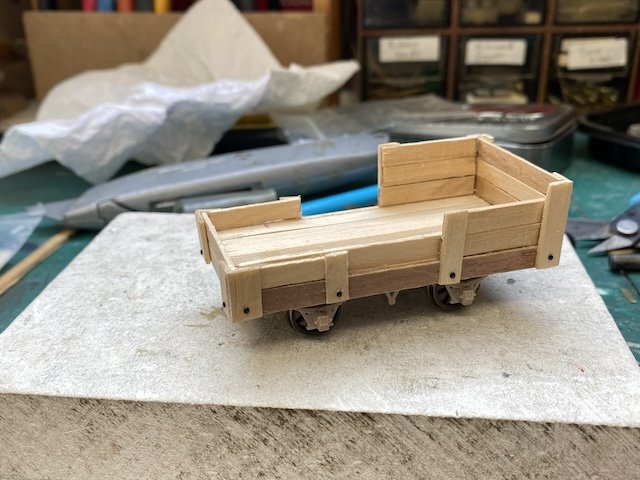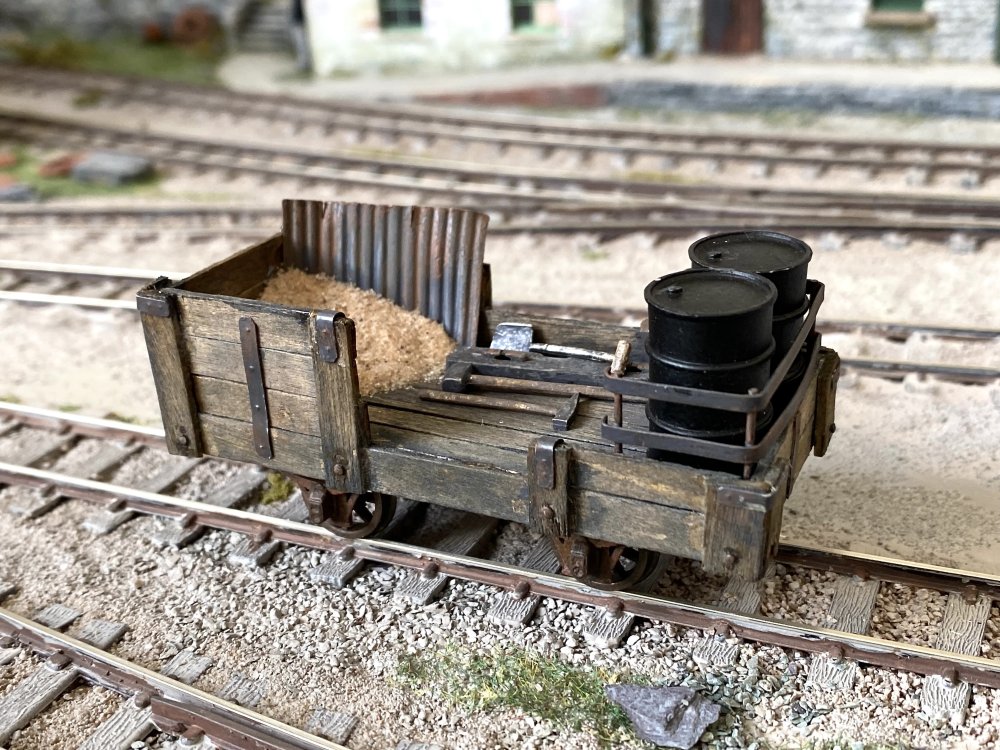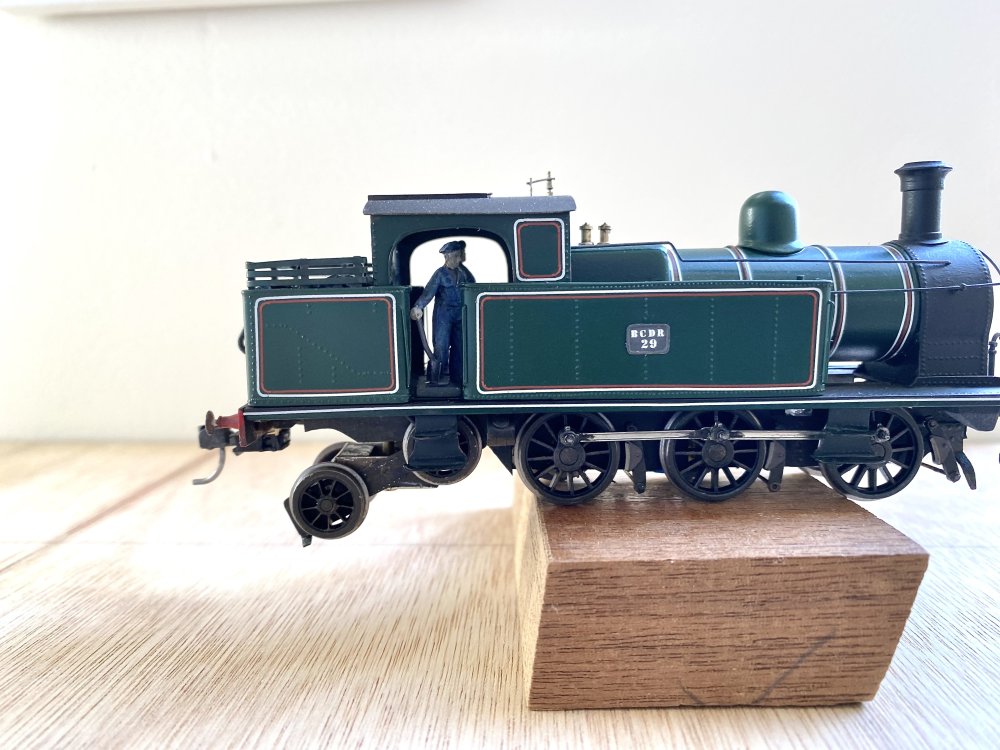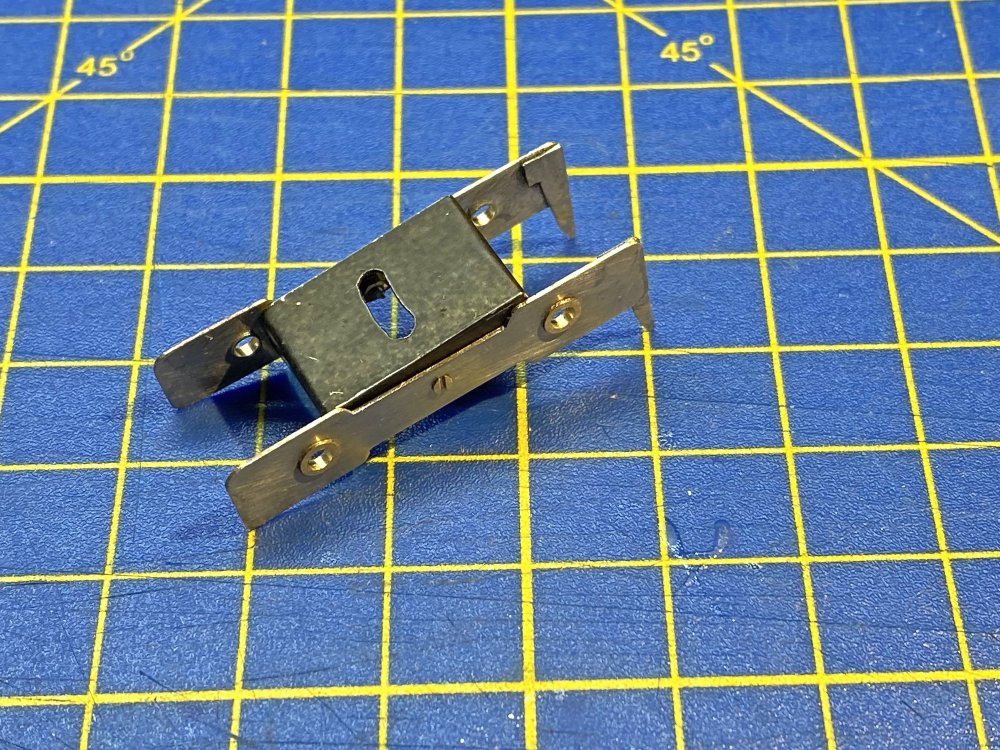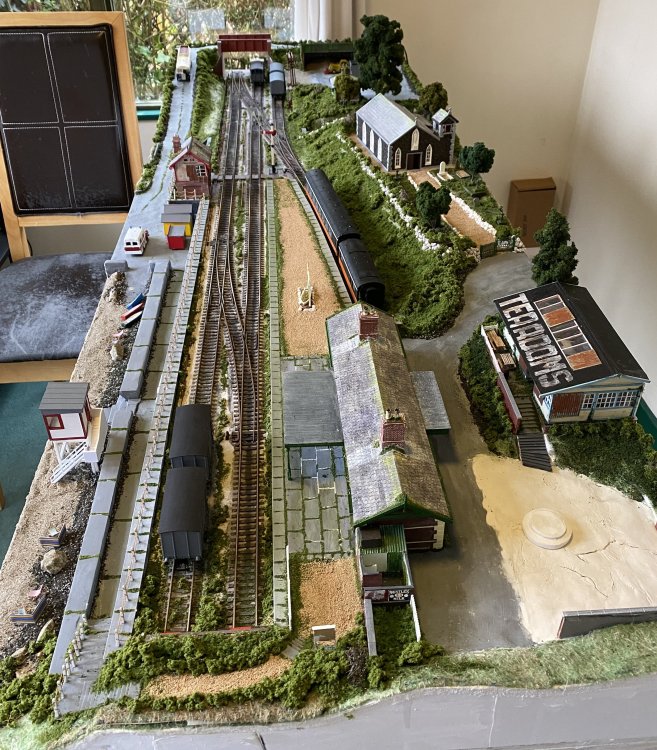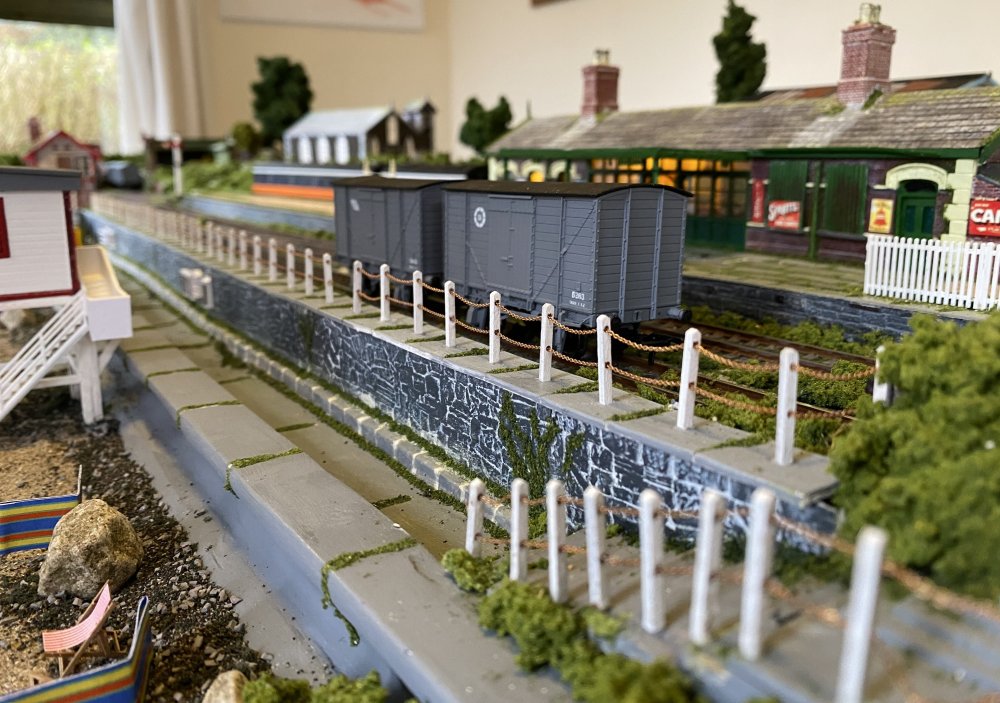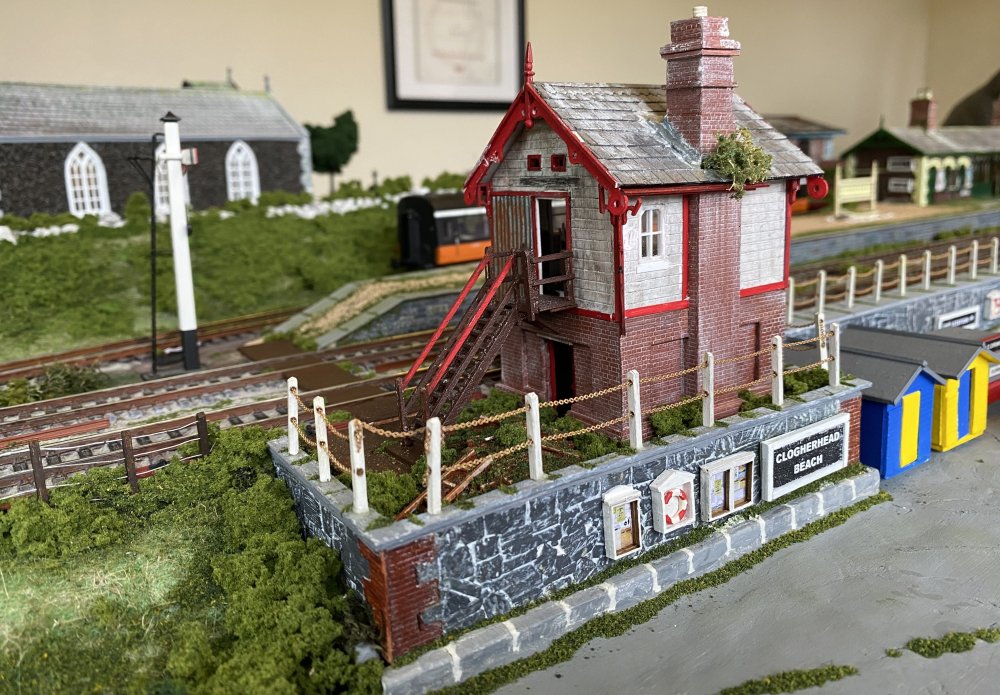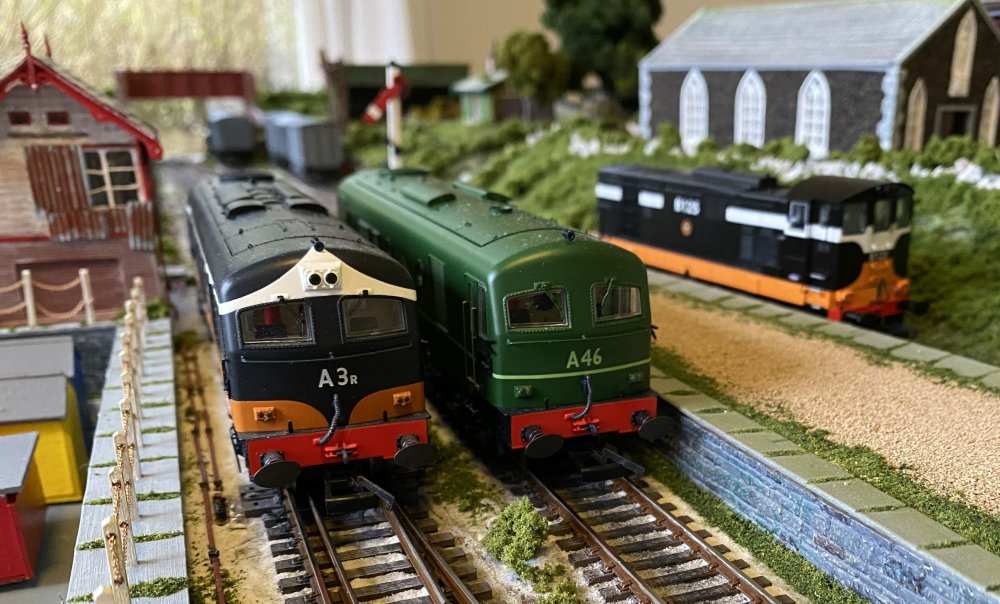-
Posts
934 -
Joined
-
Last visited
-
Days Won
55
Content Type
Profiles
Forums
Events
Gallery
Blogs
Store
Community Map
Everything posted by Tullygrainey
-
Thanks Derek. The old coffee stirrers are pretty rough to start with and they’re surprising hard to cut but they splinter nicely if you just grip them with pliers and snap them. They’re everywhere on the layout if you look. A very versatile resource and free with every regular Americano.
-
Thanks David. My technique is a bit make it up as you go along until it looks right. Doesn't always work. In this case, the woodwork was first given a coat of Ronseal woodstain to take the brightness off the wood, (English Light Oak as it happens but only because that's what was on the shelf) followed by thin washes of black and grey paint. Some dry-brushing and weathering powder finished the job. I often scrub away at the surface with whatever comes to hand to distress things a bit. Usually end up with as much paint on my hands as on the model. The rails holding the drums in place are soldered up from brass rods and scrap brass etch. The various bits of strapping are 10 thou plasticard with rivets embossed with a scriber. Both are painted with Humbrol Metalcote 27004 Gunmetal which dries matt but polishes up nicely using cotton buds. Then some dry-brushing with rust colours (mainly Humbrol Matt enamel 113).
-
It's been quiet of late at the Stone Yard but the Permanent Way gang have recently acquired a new wagon. Clearly no expense was spared in the fabrication. It's believed to have been built using repurposed timber sourced from the Costa Coffee Company. IMG_9412.mov
- 113 replies
-
- 14
-

-

-

-

-
This sounds great. Good luck with it. Very fine models in Galteemore’s link above
-
Beautiful work Ken, and a joy to see. So wonderfully neat - not a trace of solder on the outside! Where can I get a soldering iron like yours? I like the springy wire method for holding the cab roof on. Might be tricky to do but at least it can be fettled to fit. I’ve used a central bolt into a captive nut to do this job but it needs to be planned for well in advance and if you get it wrong it’s hard to fix. The bolt also needs to be hidden under a roof hatch.
-
More evidence of intense activity! John, what's that tool at the front right that looks like a black soup spoon with a wooden handle?
-
The fact that there are so many ways of tackling the construction and mounting of bogies just illustrates how tricky it is. However the job is approached, it seems to me that to be successful, the design must allow for rotation and sideways movement in the bogie frame and up and down movement in the bogie wheels. Horsetan's suggestions here would seem to fit the bill but I suspect it would need very careful setting up to make sure the bogie, supporting the frame and with no up and down movement, doesn't affect the driving wheels' contact with the rails. I have an Oxford Rail Adams Radial 4-4-2 chassis in which the bogie, even though it does have a little up and down movement, props the driving wheels clear of the track on some occasions. ( yes, I know. Blame the track. I do!) The bogie on my BCDR 0-6-4T dangles below a chassis spacer like Boris Johnston from a zip wire. It moves on a central vertical shaft and supports nothing but itself. It's free to rotate and move sideways and the wheels are free to move up and down. It's a nightmare to get it properly railed but once on the tracks, it stays there. But that's only one way of doing it. Weight distribution was important to the success of this one with enough over the driving wheels to ensure the chassis didn't tip backwards. I also suspect that the wheel arrangement of the loco will have an impact on what works or doesn't. Alan
-
Workbench is certainly looks busy but what's the point of having tools if you don't use them Glad to hear you've made progress with the Barclay David. It will have been worth the effort. It always seems to be the case with loco building that, even though you try to make painting it the very last part of the process, something always conspires to upset that plan and the paintbrushes have to come out again! However, I always feel that getting the thing running properly is 9/10ths of the task. Once that's achieved, the cosmetics can be tackled with enthusiasm Onward and upward.
-
Bogies!! (grunts, spits in gutter). A pain in the proverbial. You have my sympathies David. Looking at your pics, a few things occur: Does the bogie have enough lateral movement? Would a bit more help lessen that sharp angle with the drivers as the loco enters curves? Are the springs that control lateral movement too strong and are they actually preventing sideways movement? Have you tried running it without the springs? I used the Ahern curved slot approach on the bogie for my BCDR 0-6-4 tank. The width of the slot is the only restraint on bogie movement - there are no other wires or springs and the bogie is left to do its own thing. It clatters happily through Peco OO short points and I haven't had any problems with derailing. It's full of lead which also probably helps keep it where it's supposed to be. In the past, I've noticed that leading bogies without the ability to move sideways often start to tilt instead when they enter a curve. The inside wheels lift off the track and the bogie eventually jump the rails or causes the drivers to derail. It's what prompted me to use a slot. Good luck with the debugging. Alan
-
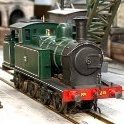
Clogherhead - A GNR(I) Seaside Terminus
Tullygrainey replied to Patrick Davey's topic in Irish Model Layouts
Leslie will correct me if I'm wrong but they look like Railtec transfers. I've checked the Railtec site and they offer a range of GNR(I) options but nothing in 7mm unfortunately David. Might be worth an email though because they do have other 7mm stuff in their catalogue. -
Wonderful! I love the B&W image. Full of atmosphere and detail but beautifully understated and the oul fella with his hands in his pockets just brings it to life. Less is definitely more here!
-

Clogherhead - A GNR(I) Seaside Terminus
Tullygrainey replied to Patrick Davey's topic in Irish Model Layouts
Had a very enjoyable day trip to Clogherhead today. I must say the original station building has weathered well. The dimly lit interior is like being in a time warp. The tearooms were closed (looked like they had been for a while) but we had the foresight to bring a packed lunch and so we just sat in the deckchairs down on the beach, eating our sandwiches and digging our toes into the Clogherhead sand. We'd have hired a dingy for a spell round the bay but there was no sign of Rowan Boats and being the good citizens we are, we wouldn't have taken one without paying. Some interesting motive power came past while we dozed in the weak sunshine. These beasts make a mighty racket when they get together. We were so engrossed in loco spotting, we missed the last train out but there's always a bus. Thanks Patrick. It was a blast. Brilliant layout. A credit to you. Alan -
Has anyone said ‘a towering achievement’ yet? OK I will.
-
I like this!
-
Quality work!
-
Looks like his dream went up in smoke. It strikes a sad note for sure.
-
Judging by the prototype photograph of 254, the Austin is relying on its handbrake to stay aboard!
-
This is a really worthwhile project Paul. I wish you well with it. Don't suppose you have and Belfast and County Down locos in your collection?
-

N Scale Ballywillan, Co Longford.
Tullygrainey replied to Kevin Sweeney's topic in Irish Model Layouts
This isn’t model making, it’s miniature architecture! Wonderful work Kevin. Really impressive. -
Something out of a Transformers movie?
-
Brilliant stuff Ken. I’ve been drooling over these photos. The 3D prints are wonderfully crisp.
-
Definitely wow! I remember being bowled over the first time I saw pictures of Pempoul. The landscaping was just so good. Best modelling I’d ever seen. I’m sorry I never got to see it for real. They’ve retired it now I think?
-
Lovely stuff David. The rolling stock is looking suitably care-worn. Very convincing. The movement sequence sounds good and would be interesting to do and to watch. That the layout can support movements like these is a fair indication of the thought put in at the layout planning stage.
-
You may have noticed my model of No 18 started out as a full English
-
That's an impressive and very solid start. Puts my woodworking efforts to shame Very best wishes for the project. This one's going to be mighty I think!
.png.c363cdf5c3fb7955cd92a55eb6dbbae0.png)
